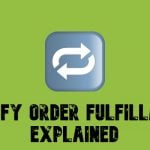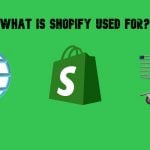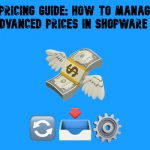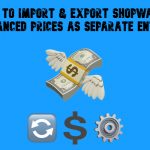Best Dynamic Pricing Optimization (DPO) Services For The E-Commerce

Dynamic pricing is a future of e-commerce. Being a flexible pricing strategy, it is widely used across different industries, but it is relatively new for the online retail. Below, we will focus on all aspects of dynamic pricing in e-commerce. Among different pricing strategies, dynamic pricing is the most relevant to the needs of this industry. E-commerce is rapidly growing, so don’t loose your chance to enhance your online store with a winning strategy.

Despite it is outdated, static pricing still holds the first place in different industries. This situation exists because of technical difficulties. To create a successful dynamic pricing strategy, you need tons of information about the market. For the most industries, it requires a lot of time and effort to collect all the necessary data. But e-commerce is an exception. In the age of big data, online retailers can get all the information about pricing of major competitors, key market trends, or sales volume for the certain period with ease. With such abilities, e-commerce creates the perfect environment for the implementation of dynamic pricing. Online merchants change their prices manually or rely on software to make the process automated. Dynamic pricing is no longer a privilege of giant companies only. It has became an effective way to boost sales and revenues for the small and midsized e-commerce retailers.

Table of contents
How Does It Work?
Dynamic pricing strategy is based on both internal and external factors. Usually, under internal factors we mean internal sales data. Different market changes form the group of external factors. A successful dynamic pricing strategy should be able to provide automated response to both. As a result, it can optimize profit and revenue.
At first blush dynamic pricing seems to be all about price changes, but it is not true. Its second major purpose is a surveillance of competitor pricing. Keep in mind, that your price matters only in relation to what your competitors offer. You don’t need to provide the lowest possible price to become successful, instead you should rely on relative pricing. And all your relative prices should be flexible in order to stay effective.
Every successful dynamic pricing strategy relies on three components:
-
Competitors monitoring
-
Floor price and rules
-
Analysis and reevaluation
Competitors monitoring
As mentioned before, effective prices are always based on prices of other market players. In order to provide customers with the most attractive offer and at the same time not to lose profit, online retailers should analyze data of their competitors. This data is essential for all possible kinds of pricing software. It shows the level of demand and prices. When the conversion is low, the software automatically sets lower prices to pick it back up. When the demand is high, it raises prices. In both results we can see the increase in sales and profit.
Floor price and rules
It is also necessary to set floor prices – lower price limits for every product. In this case, you ensure yourself from losing money. In addition to floor prices, you should set price rules, that will determine the distance to the price of your top competitors. Usually, it is a certain percentage. There also can be rules for site traffic, selling goals, demand, etc.
Analysis and reevaluation
Every retailer has unique challenges, that’s why it is strongly necessary to analyse and reevaluate the existing pricing strategy. Chances are, that there is a better approach to dynamic pricing than the existing one.
Other advices
Dynamic pricing works better in a combination with other strategies and sets of actions. For example, you should target your audience more effectively. It is also important to know what is in demand, since you can plan your stocks according to this information. And make better product recommendations – fight for the attention of your customers.
Key Aspects Of Dynamic Pricing In E-Commerce
If e-commerce is relies heavily on a dynamic pricing strategy, the dynamic pricing provides its influence on all top metrics of the online business. For example, profit margins can be improved by 25%, which is an average value.
Flexible prices always change according to received data. The only drawback is the relevance of this information. If your pricing software gets outdated data, you can lose profit. All the changes in pricing will reflect the past states of the market, which are not comparable with the current conditions. It doesn’t mean, that you will not receive any profit, but chances are you will receive less than possible.
Online retail is changing rapidly – much faster than offline market. That’s why even the shortest delay in the data flaw can become a reason of a significant loss. To remain your dynamic pricing strategy effective you need to base it on the best possible data. Thus, manual data collection is irrelevant in e-commerce. During the time required for this process, market conditions can be changed several times. Due to this reason, e-commerce retailers rely on (check our list below).
With the right software, you will be able to collect all the necessary information from all your competitors, about all their products, several times per day. Such approach provides you with the ability to reflect the current state of the market. The most advanced tools always produce a high quality data in a necessary quantity. They cover all possible aspects of online retail, starting from price and ending with availability and delivery conditions. All this information is necessary for automated price optimisation, based on multiple rules. More rules your dynamic pricing software use, more precise it works.
As a retailer you can drive higher volumes of sales and improve the conversion. Furthermore, by monitoring competitors, you will be able to know when your prices are too low, and you can raise them without any harm to customer appeal. You also get an invaluable market overview, necessary for making new pricing decisions and creating better strategies.
However, the race for lowest price can get out of hand. Continuous undercut of prices easily turns into harmful price wars. The lowest price strategy became winning only for loss leaders – huge companies, such as Amazon.

Amazon, Best Buy and Walmart are three loss leaders, which change their prices most frequently. For example, Amazon sets new prices for certain products every 10 minutes – that’s over 100 times per day. Sometimes this happen even more often. As a result, retailers can compete with Amazon only if they use dynamic pricing.
Wal-Mart and Best Buy are two other examples of e-commerce companies, which rely on dynamic pricing strategies. Both change their prices over 50,000 times during a month. Being a loss leader, you will newer get the highest profit margins, so it is extremely important to get a substantial market share to stay afloat. That’s why this strategy isn’t possible for most retailers. Only the biggest market players can rely on it. But there are many lessons that other e-commerce retailers can learn from the experience of loss leaders. Dynamic pricing strategy can help with bolstering of brand perception. It provides the ability to generate extra sales. As a result, you get additional profits. The market is in constant development, so pricing must comply with this process in order to remain profitable.
As more and more online retailers enter the space of dynamic pricing every day, it becomes an integral part of e-commerce. Around a quarter online retailers already rely on dynamic pricing strategies, other are catching on. Now, it is obvious, that dynamic pricing is the future of e-commerce. With the growing competition, right pricing strategy becomes a tool necessary to keep floating and get ahead of competitors.
Dynamic pricing tactics and price discriminations in e-commerce:
-
Segmented pricing
-
Peak pricing
-
Time-based pricing
-
Penetration pricing
Segmented pricing
Segmented pricing is widely used within big markets. According to this strategy, retailer relies on tiered prices. It provides different customer groups with the same goods under different prices. For example, OEM produces cheap entry level smartphones. Their price differs from market to market in order to capture as much of the audience as possible.

Segmented pricing
Peak pricing
Peak pricing is often used in a case of high demand or when competitors inventory is low. When the demand is rising, the increasing prices will not distract customers. When competitors inventory is low, they will not have any alternatives. The first case is common for the holidays, when consumers are looking for gifts, or special events, such as championships.
Time-based pricing
There are also two main cases for time-based pricing. This pricing tactics can be used according to the time of day or the time the product is on sale. By marking old products down, e-commerce retailers increase the demand for them. This is common for a situation, when a company presents a new model of its product. At the same time, an older one gets lower price. So, with the help of time-based pricing, e-commerce retailers can manipulate the demand on different goods within different time periods.
Penetration pricing
Penetration pricing is used for new products. When it is necessary to introduce a product to the market, retailer sets a price that is lower to the eventual market price. Thus, it persuades consumers to try this product. As a result, penetration pricing helps to attract new customers and at the same time pull them from the competitors. This tactics can be used in combination with pick pricing in a case of increasing demand.
All these pricing tactics can be used together depending on the market situation and features of the online retailer.
How to implement dynamic pricing in e-commerce
First of all, you should know your customers and understand market conditions. With the access to big data, you can implement a pricing optimization strategy with ease. Find out, who your major customers are and how much they are able to pay. Distinguish your competitors, and check all market conditions. Test the new strategy on certain products, this will help you understand the whole situation without affecting all your activities.
It is necessary to understand, that repricing shouldn’t cut into your costs. In order to achieve this, you should set a price floor.
You can also rely on A/B testing. Test your prices, tactics, and strategies to understand what suits best for your e-commerce store. You will be able to learn more about your target audience, your visitors, and your buyers. For every price change, you will receive a lot of data. Keep in mind, that strong pricing strategy is impossible without strong data analysis.
To avoid price wars, stay true to your brand. Loyal customers will always return to your e-commerce store, even if your prices are not the lowest.
Best Dynamic Pricing Optimization (DPO) Services & Startups
Wiser
Wiser’s portfolio consists of multiple products designed to provide retailers with the ability to stay competitive and profitable. WisePricer is a flagship solution of the company. It is a dynamic pricing engine, which works in real time. WisePricer monitors market situation, analyzes data, and automatically sets new prices according to received information. It provides e-commerce merchants with the ability to boost profit margins, get better revenue, and implement more advanced merchandising, by using a right pricing strategy.
Another company’s solution is WiseMapper. It is a MAP monitoring tool for manufacturers, which helps with pricing protection.
Wiser provides several pricing plans. PRO plan costs $799 per year. It provides the support for up to 15,000 products and 3 channels. For $1449 per year, you will be able to buy a premium plan, which supports up to 50,000 products and 5 channels. Unfortunately, there is no price for Enterprise plan, but it supports unlimited number of products and up to 50 channels.

Wiser
Ventata
Ventata is another provider of software for dynamic pricing optimization. It supports all major e-commerce platforms, such as Magento, Shopify, BigCommerce, PrestaShop, etc. Ventata analyzes historical orders and determines sales velocity, curves of supply and demand, repricing intervals, past price testing. All the information is displayed in a control panel. You can mix and match pricing strategies for all your products. Ventata provides the ability to choose between Unlimited and limited supply, razor and appointment pricing, etc.
Company’s solution helped its customers increase revenue by 100% within just one month. Ventata is free for stores with the revenue less than $2,500 per month. For the increasing revenue, company charges 1% from products priced with Ventata’s software. There is also an ability to pay $50 per month for the first 500 products, additional products costs 1 cent per month.

Ventata
Boomerang Commerce
Boomerang Commerce provides software for real-time data analytics, optimization, and machine learning, which brings dynamic price optimization to e-commerce. Boomerang tracks fixed and variable costs at different levels to measure true profitability of every online store. It provides rule-based automated price optimisation. Thanks to A/B Testing, you will be also able to compare different pricing strategies to maximize the impact of your business. A “What-if” analysis is another strong point of Boomerang. Other useful features include Price Perception Index and Dynamic Price Optimizer. You can get all this within one convenient dashboard. Unfortunately, there is no any information about prices.

Boomerang Commerce
Quantival
Quantival is famous for its Intelligent Pricing Engine. This tool is designed for the optimization of pricing strategies for e-commerce stores. It continuously analyzes demand and the impact of different events on the market. Intelligent Pricing Engine reacts on changes within sub-seconds. The tool relies on demand-based dynamic pricing algorithms. As a result, it is able to set optimal fees and increase the revenue. No pricing plans are available.

Quantival
Darwin Pricing
Dynamic pricing software by Darwin Pricing relies on both real-time market analysis and intelligent techniques of price optimization. It provides your e-commerce store with optimal pricing strategy designed to boost traffic, sales, and profits. Moreover, Darwin Pricing provides the ability to create Geo-Targeted Sales Campaigns. It means, that customers from different locations see different prices. As a result, you can compete with local retailers. With a Dedicated Pricing Manager, you will be able to improve your monthly sales by +150%.
Darwin Pricing provides several pricing plans. The first one is Grow!, which costs $150 per month. This plan provides unlimited traffic and works for e-commerce shops with monthly revenue less than $50,000. Professional pricing plan costs 3,000 per month. The limit in sales is $100,000. Enterprise solution cost $5,000 per month and has no limits.

Darwin Pricing
Price API
Price API is not exactly a software for dynamic pricing strategies implementation, but we couldn’t miss it, because it is one of the most reliable sources of real-time price and product data from competitors. With Price API, you will be able to get price data via JSON query. The solution is also used for complementing product data with different details and ratings. Price API is also responsible for providing information about pricing and retail strategy of your closest competitor and other market players. Unfortunately, the platform works just in several countries. Check the supported countries on the official site.
Price API offers three plans based on credits. 1 credit costs 0.5¢ if you buy 20,000 credits. For 200,000 credits the price is 0.25¢ per credit, and for 2,000,000 credits one credit costs just 0.125¢. Daily update of information costs 1 credit, real-time update – 2 credits.

Price API
Minderest
Minderest monitors your competitors and provides price comparisons once a day. You also get alerts when someone is out of stock or has modified prices. All this data is necessary for the optimization of your dynamic pricing, and you can get it without any installations or configurations. Everything is included into the platform. You get all the data within a convenient interface. You just have to specify your competitors. There is only one pricing plan without any information about price.

Minderest
Blue Yonder
Being a cloud-based scalable platform, Blue Yonder might be used for different purposes. It supports integration through APIs, uses optimized data memory for analysis, and relies on computing network for large data sets. Blue Yonder provides the access to machine learning algorithms and modules. The platform generate all necessary data 24/7. Of course, it provides dynamic pricing optimization and supports integration with different e-commerce platforms.

Blue Yonder
Perfect Price
With Perfect Price, you will get a set of different tools and solutions designed for dynamic pricing strategy implementation. They include dashboard with top changes, best and worst competitors, and other important data; instruments for price testing and optimization; “What if” analysis, etc. The platform also provides the ability to monitor prices of other market players with historical data. Hit the below link for the additional information.

Perfect Price
PROS
PROS adapts your pricing strategy to the current market conditions. As a result, you can choose the most suitable pricing strategy for your e-commerce business, or enhance the one you are currently using. With PROS, your store will not only stay afloat, but it will also get a competitive edge over other market players.

PROS









